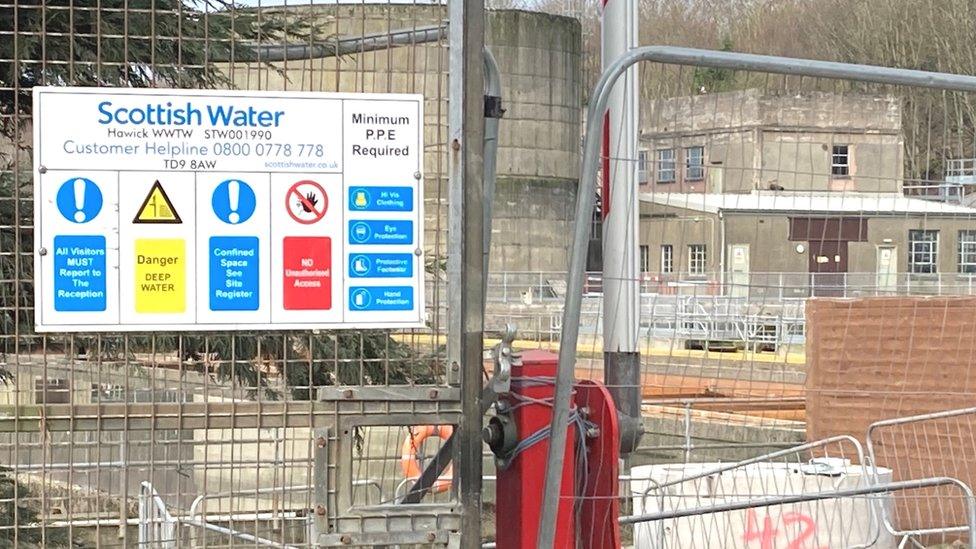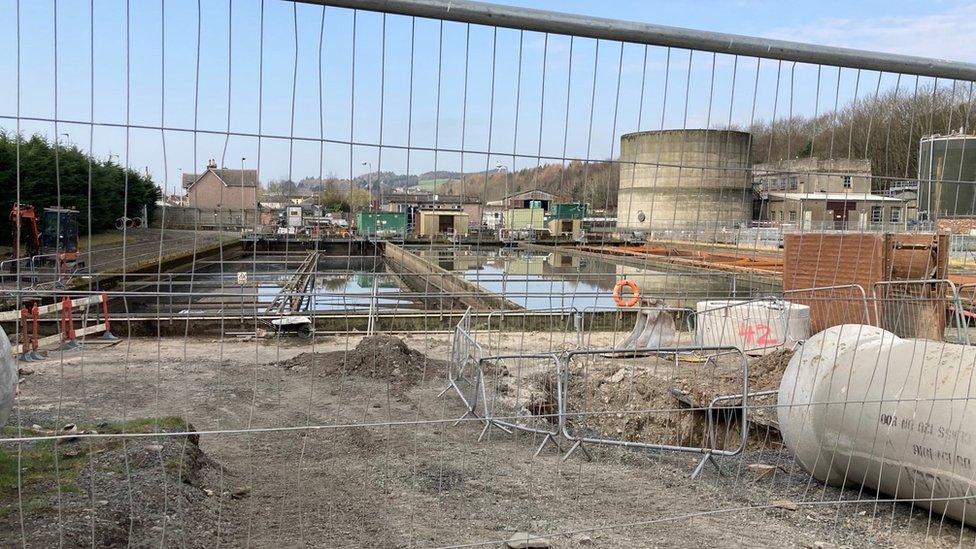Hawick site accounts for 75% of Scottish Water sewer overflows
- Published

The Scottish Water site in Hawick has seen a spike in emergency overflows recently
A single Scottish Water site accounted for more than 75% of its emergency sewer overflows last year.
A BBC Freedom of Information (FOI) request found more than 90 incidents out of 121 occurred at the Hawick Waste Water Treatment Works (WWTW) in 2021.
Scottish Water said the discharges were authorised for a variety of reasons including breakdowns and bad weather.
It said a repairs project carried out last year on inlet screens should also help to reduce overflow incidents.
The FOI request received details of emergency overflows from Scottish Water's sewer network over the past five years.
These allow sewage to be spilled into a nearby watercourse. In the case of Hawick, it is into the River Teviot.
Heavy rainfall is among the main causes, but Scottish Water said any such discharges would be "very dilute" and no public health concerns had been raised about them.

The FOI showed falling numbers of incidents between 2017 and 2019 across the country.
However, the figures have risen sharply over the past two years - largely fuelled by the spike in numbers at Hawick.
Scottish Water said the discharges, which are authorised by the Scottish Environment Protection Agency (Sepa), could occur for a variety of reasons.
These included breakdown, mechanical failure, power loss or wet weather.
There have been a significant number of storms and heavy rainfall incidents in Hawick over the past two years which may have inflated the figure.

Repair work at Hawick hopes to reduce the number of discharges recorded
The company said it had also identified an issue with inlet screens at the site in the Scottish Borders in 2021.
Repairs were carried out which should help to reduce the number of emergency discharges.
A spokesman said it remained committed to ensuring that the works operated in accordance with Sepa's licence conditions.
He added that the spills were unrelated to the current multi-million pound flood defence work in Hawick.